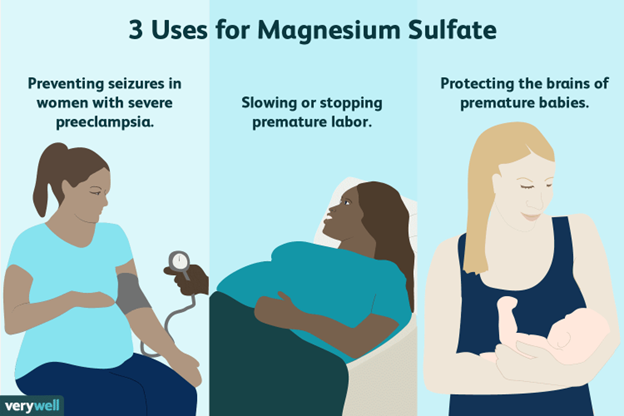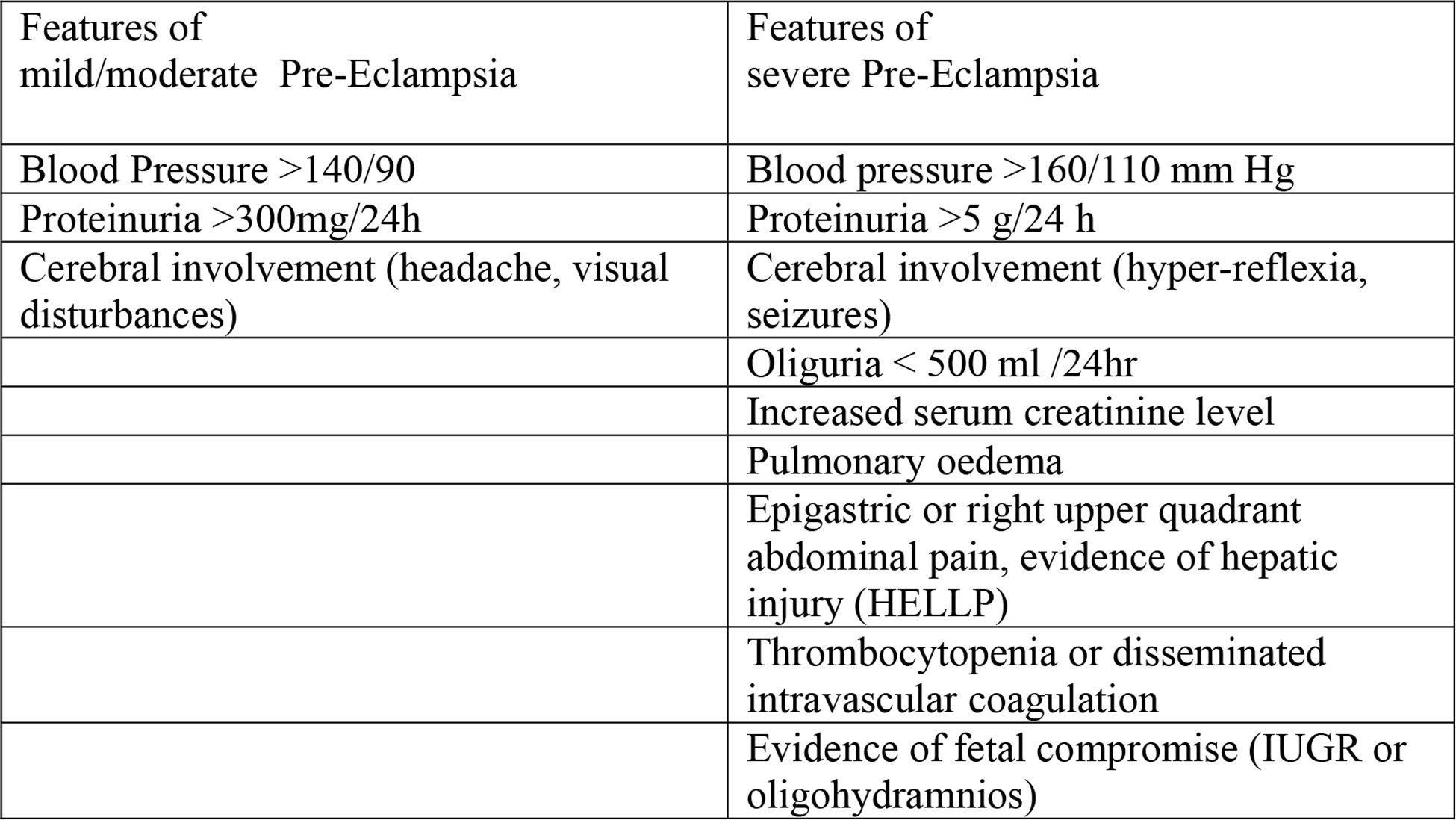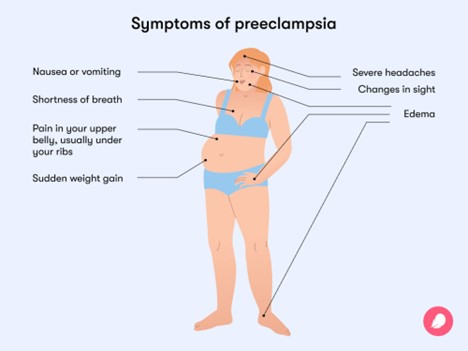Pre-eclampsia, Eclampsia > Maternal & Newborn
Exam Review
Introduction
Total Questions : 5
Showing 5 questions, Sign in for moreA nurse is caring for a client with pre-eclampsia who is receiving magnesium sulfate.
What is the rationale for administering this medication?
Explanation
To prevent seizures.Magnesium sulfate is given to reduce central nervous system irritability and prevent seizures in clients with preeclampsia.Preeclampsia is a hypertensive disorder that occurs after 20 weeks of gestation and is characterized by elevated blood pressure, proteinuria, edema, headache, epigastric pain, and vision changes.

Choice B is wrong because magnesium sulfate does not lower blood pressure.Some antihypertensive drugs might be given to manage blood pressure in clients with preeclampsia.
Choice C is wrong because magnesium sulfate does not increase urine output.In fact, it can cause urinary retention and oliguria as adverse effects.
Choice D is wrong because magnesium sulfate does not promote fetal lung maturity.
It is given to prevent maternal complications, not fetal ones.Corticosteroids might be given to promote fetal lung maturity if delivery is anticipated before 34 weeks of gestation.
A nurse is assessing a client with severe pre-eclampsia who reports a headache and blurred vision.
What other sign or symptom would indicate a worsening of the condition?
Explanation
Epigastric pain is a sign of worsening pre-eclampsia that indicates liver damage.It can also be associated with HELLP syndrome, a severe complication of pre-eclampsia that involves hemolysis, elevated liver enzymes and low platelet count.

Choice B is wrong because facial edema is a common symptom of pregnancy and not specific to pre-eclampsia.
Choice C is wrong because proteinuria is a diagnostic criterion for pre-eclampsia, but not a sign of worsening condition.
Choice D is wrong because brisk reflexes are a normal finding in pregnancy and do not indicate pre-eclampsia severity.
Normal ranges for blood pressure are below 140/90 mmHg, and for proteinuria are less than 300 mg in 24-hour urine collection.
A nurse is teaching a client with mild pre-eclampsia about the signs and symptoms that she should report to the health care provider.
Which of the following should the nurse include? (Select all that apply)
Explanation
The correct answer is choice A and B.Sudden weight gain and decreased fetal movement are signs of pre-eclampsia, a condition that develops in pregnant women and is marked by high blood pressure and presence of proteins in urine.Pre-eclampsia can affect the blood supply to the placenta and the growth of the baby.

Choice C is wrong because vaginal bleeding is not a symptom of pre-eclampsia, but it may indicate other problems such as placental abruption or miscarriage.
Choice D is wrong because nausea and vomiting are not specific symptoms of pre-eclampsia, but they may occur in some cases.However, excessive vomiting and nausea may be a sign of severe pre-eclampsia.
A nurse is preparing to administer an antihypertensive medication to a client with pre-eclampsia.
What is the goal of pharmacological therapy for this condition?
Explanation
To prevent blood pressure from exceeding 160/110 mmHg.The goal of pharmacological therapy for pre-eclampsia is to prevent severe hypertension that can lead to complications such as stroke, kidney failure, or placental abruption.
Choice A is wrong because maintaining blood pressure below 140/90 mmHg is the target for normal hypertension, not pre-eclampsia.
Choice B is wrong because reducing blood pressure by 25% within one hour is too rapid and can compromise blood flow to the placenta and the fetus.
Choice C is wrong because keeping diastolic blood pressure between 80 and 100 mmHg is not specific enough and does not account for the systolic blood pressure, which is also important.
A nurse is reviewing the laboratory results of a client with pre-eclampsia.
Which of the following findings would indicate a risk of disseminated intravascular coagulation (DIC)?
Explanation
Decreased fibrinogen level.This indicates that the client has a risk of disseminated intravascular coagulation (DIC), which is a condition where the blood clots abnormally and causes bleeding in various organs.Fibrinogen is a protein that is essential for blood clotting, and a low level means that the clotting factors are being consumed faster than they can be produced.
Choice A is wrong because elevated platelet count is not a sign of DIC, but rather of normal pregnancy or other conditions that cause thrombocytosis.Platelets are blood cells that help form clots, and a high count means that there is an increased production or decreased destruction of platelets.
Choice C is wrong because increased prothrombin time (PT) is not a specific sign of DIC, but rather of any condition that affects the extrinsic pathway of coagulation.PT measures how long it takes for the blood to clot by adding tissue factor, which activates factor VII.A prolonged PT means that there is a deficiency or dysfunction of factor VII or other factors in the common pathway (X, V, II, I).
Choice D is wrong because reduced partial thromboplastin time (PTT) is not a sign of DIC, but rather of hypercoagulable states or antiphospholipid syndrome.PTT measures how long it takes for the blood to clot by adding phospholipids and an activator, which activate factor XII.A shortened PTT means that there is an increased activity or presence of factor XII or other factors in the intrinsic or common pathway.
Sign Up or Login to view all the 5 Questions on this Exam
Join over 100,000+ nursing students using Nursingprepexams’s science-backend flashcards, practice tests and expert solutions to improve their grades and reach their goals.
Sign Up Now

